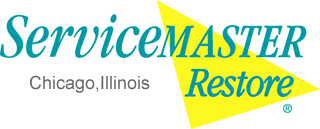After the initial shock of discovering water damage, you may wonder what your next steps should be. Professionals have the skills, training and tools to remedy the situation as efficiently as possible.
Learn how experts use restoration equipment to mitigate the risks of health and safety hazards — and learn what to expect throughout the process. Hiring technicians to use state-of-the-art machinery helps protect your environment and restore your peace of mind.
1. Water Pumps
If you still have any standing water in your residence or office space, your water damage technicians will immediately pull as much of it out as possible. To do this, they'll use water pumps that make a Shop-Vac look like a kid's toy!
High-volume water pumps allow for immediate extraction of water and other liquids. The water restoration equipment can also prevent dirt and mud from piling up — for example, in basements suffering from backed-up sewers or poorly-working drains.
This type of water restoration equipment will probably not be left on your property, as it's customarily attended by a specialist who has been trained on its proper usage.
2. Industrial-Quality Fans
These aren't your ordinary house fans. Rather, they are specialty fans that force the air to circulate quickly. Not only do they kick up wind in the area, but they keep moisture from settling on surfaces.
Depending on the size and scope of your water restoration project, your preferred water damage restoration specialists may use more than one fan as an air mover.
Because fans often have to run for many hours or days to get the job done, fans may be left on your premises with instructions not to turn them off. Follow your technician's request to resist hitting the "off" switch. Otherwise, you could put your property in harm's way by allowing moisture to seep farther away from the surfaces.
3. Super-Strength Dehumidifiers
Mold growth happens as humidity rises, so it's best to keep humidity levels as low as possible in places that have flooded or incurred any kind of water damage. State-of-the-art dehumidifiers for water damage offer a way to control the moisture levels in an environment.
Dehumidifiers essentially pull the moisture from the air and condense it back into water that can then be properly disposed of. The dehumidifiers used by water restoration technicians are very strong, which is necessary to ensure dryness as fast as possible.
Like fans and similar industrial-strength air movers, dehumidifiers take some time to do their work. Therefore, don't be surprised if your professional water remediation specialist tells you that the dehumidifier will stay running on your property until the humidity has reached an acceptable level.
4. Air Scrubbers
Cleaning the air is essential during any water damage restoration project. Air scrubbers are powerful tools technicians use to purify an environment. The devices draw in the contaminated air a few times every hour and force it through a series of filters to remove any particles, bacteria or gases that could be dangerous to inhale. These filters help remove airborne particles and give you confidence in the air you breathe.
Using portable air scrubbers and dehumidifiers together offers an efficient process. The devices are easy to move and come in different sizes and strengths, depending on what you need. The standard time it takes to clean the air ranges from one to two days, depending on the number of scrubbers your technician uses. Larger spaces may require more time and scrubbers to complete the cleaning process.
5. Moisture Meters
Water can get into many different areas in your walls or floors while going unnoticed. Increased moisture can lead to mold growth or material degradation, which could cause further damage. Your technician can use a moisture meter to find high-moisture areas following water damage.
There are two types of moisture meters — pinless and pin-type— and which one you use is determined by whether the material tested can or should be punctured. Pin-type uses two pins to penetrate the material, while pinless uses an electromagnetic signal.
These meters effectively measure the moisture present in plaster, concrete, wood, soil and more. Knowing what areas have a higher moisture content is critical to preventing any more damage to your home or office space. Once your technician finds moisture, they'll provide an overview of their findings, come up with a plan to remove the moisture and secure the area.
6. Desiccants
A desiccant helps absorb the air's moisture and preserve a dry environment. Some types of desiccants include calcium oxide, activated charcoal and silica gel. While you can commonly find them in packets placed in food packaging, they can also sit throughout a home or office to remove moisture in particular areas.
Your water specialist can place desiccant packets around the affected area to remove any moisture present. Because they can only hold a certain amount of water, they often change color when full, informing your technician they are ready to be replaced.
Benefits of Quality Drying Equipment
Your home is one of your most important investments — whether water damage happens suddenly or develops slowly over time, working with specialists can help you restore your living spaces, resume your everyday routines and protect your family. Hiring restoration experts offers a way to:
- Detect moisture accurately: Moisture meters use precise measuring methods to identify the amount of water in materials. With accurate measurements, technicians can create targeted restoration efforts for a project.
- Enable faster extraction: High-powered water extractors can remove standing water from carpets, floors and subfloors. The equipment offers fast drying times and helps reduce the risk of permanent damage.
- Allow for effective drying: Powerful air movers and dehumidifiers work together to remove excess moisture from a space. Each device promotes faster drying and helps prevent mold growth.
- Achieve air quality control: Air scrubbers help remove contaminants and odors. When implemented in a restoration project, the tools help improve indoor air quality.
- Prevent further damage: Specialized equipment helps tackle water damage effectively and efficiently. The right tools can help prevent further structural damage, including rotting and warping.
The Importance of Professional Help
Water damage may occur for numerous reasons, from damaged roofs to faulty plumbing. After any leaks or flooding occur, addressing the issues right away is essential. Eliminate the stress of completing extensive research, buying a long list of equipment and trying to remedy the situation with trial and error on your own.
Many insurance companies require you to request formal services from a reputable restoration company. Professionals have all the water damage restoration and mold remediation equipment needed to get the job done. Plus, they may have the expertise to help you navigate the insurance process.
When you work with water damage specialists, they'll assess your space, provide valuable guidance based on your situation and answer any questions you have about your next steps. They can give a transparent estimate for any restoration services you need and provide your solutions as quickly as possible.
Hire Professionals for Water Damage Restoration
Want to have the best result possible after experiencing flooding or other water damage? Always listen to your water damage restoration specialist and put your trust in their equipment.
Need someone to come to your home or business quickly? Contact ServiceMaster of Lincoln Park, day or night, for speedy outcomes.



Comments are closed.